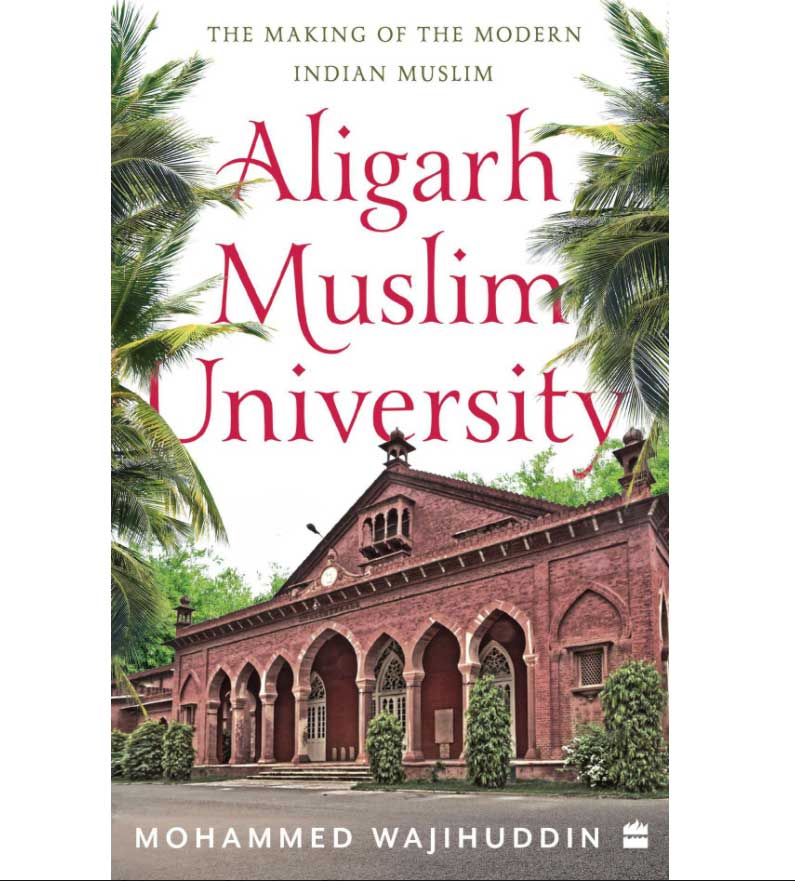
In December 2020, the Aligarh Muslim University (AMU), Sir Syed Ahmad Khan’s dream-come-true, completed a hundred years. It’s an occasion the global community of its proud alumni – the ‘Aligs’ – would have celebrated in grand style. But the raging pandemic put paid to any such plan. However, it did provide time and space for one Alig to pay a unique tribute to his alma mater in the form of a book: Aligarh Muslim University – The Making of the Modern Indian Muslim. The author Mohammed Wajihuddin is a senior journalist at the Times of India.
As is clear from the Notes at the end of his book, lots has been written on Sir Syed, the Mohammedan Anglo-Oriental (MAO) College founded by him in 1877 and its later avatar, the AMU. But this is perhaps the first journalistic account on the subject which accounts for the easy-read, engaging text that flowed out of Wajihuddin’s keyboard.
In his book, Wajihuddin reminds readers on more than one occasion how Sir Syed was not interested simply in a university for Indian Muslims to dish out degrees in this or that subject. Rather, by founding an educational institution to act as the “intellectual hub of Indian Muslims”, infuse in them the spirit of modernism, rationalism, scientific thinking, he “stirred the waters of the stagnant Muslim community”.
The success of that venture is evident from the galaxy of freedom fighters, political stalwarts, writers, poets, actors and other luminaries associated with AMU at different points in its hundred-years-old history. Here is a short list of freedom fighters and national leaders with which the average Indian will be familiar with. Khan Abdul Ghaffar Khan (Khudai Khidmatgar), Hasrat Mohani, the Ali brothers, Maulana Abul Kalam Azad (India’s first education minister), Dr Zakir Hussain (President of India), Hamid Ansari (Vice-President). Included among the luminaries from the world of art, literature and sports are Saadat Hasan Manto, Ali Sardar Jafri, K.A. Abbas, Asrarul Haque Majaz, Naseeruddin Shah, Saeed Jaffrey, Shakeel Badayuni, Javed Akhtar, Talat Mehmood (playback singer), C.S. Naidu and Syed Mushtaq Ali (cricketers), Olympians Aslam Sher Khan, Govinda and Zafar Iqbal.
On a personal note, Wajihuddin records how his own life is among the numerous examples of the success of Sir Syed’s dream. On how a brief stint at AMU transformed a boy from small-town Bihar into a modern Indian Muslim. “I owe my existence to AMU. Had it not been for the three years I spent there, I would not have been the person I am today… AMU opened my eyes to the world”.
That, however, is only one side of the story of an institution which was once referred to as the ‘Oxford of the East’. AMU has had its ups and downs. Wajihuddin, who loves his alma mater but not blindly, does not shy away from drawing attention to the not so pretty side of the picture.
The role played by a significant section of the students, staff and administration in the movement for the partition of the country on the basis of religion remains a major blot. Between 1938 and 1945, Mohammed Ali Jinnah, the founder of Pakistan visited the AMU campus several times to a rousing reception on each occasion. Though they refused to be cowed down, “the ‘nationalist group’ at Aligarh was ridiculed, humiliated and pooh-poohed by the ‘pro-Pakistani’ section at Aligarh as they were outnumbered by the aggressively dominant (Muslim) League sympathisers”. In 1945, Maulana Azad who was dubbed the “poster boy” of the Congress by Jinnah closely escaped being lynched by the pro-Pakistan students. Post-independence, the same Maulana Azad along with Dr Zakir Hussain and others played a stellar role in helping the AMU community recover from the trauma of its own role in the partition saga.
In a chapter titled ‘A modern institution or madrassa?’ Wajihuddin draws attention to the problematic ‘madrassanisation’ of AMU. While recognizing the dire need for the modernisation of madrassas across the country, he bemoans the fact that by opening its doors to madrassa products from the early 1980s onward, the AMU campus opened itself to students groomed in orthodox, conservative, insular, even regressive outlooks. This is something “the founder Sir Syed would not have approved of”.
Another chapter of the book titled, ‘Bastion of liberalism or hotbed of Islamism?, the author recounts how for long the AMU campus has also been a breeding ground for various Muslim religious outfits including the Tablighi Jamaat and the Jamaat-e-Islami. Though it had a benign agenda at birth in the early 1980s, the banned Students Islamic Movement of India (SIMI), spawned by the Jamaat-e-Islami, emerged from the womb of the AMU.
“Were Sir Syed to return to his beloved campus, he would not recognize it today—and not only for its physical changes alone,” Wajihuddin writes. But being the optimist that he is, the concluding chapter of the book titled, ‘To the students of AMU’, reminds the present generation that Sir Syed’s mission of founding a modern educational institution was not just to hand out degrees but to impart the spirit of modernism and scientific thinking among Indian Muslims.
“You can take an Alig out of Aligarh but you cannot take Aligarh out of an Alig,” goes the saying. Hopefully the Aligs will read this book and introspect on the role they could play in reorienting AMU towards its original vision and mission.